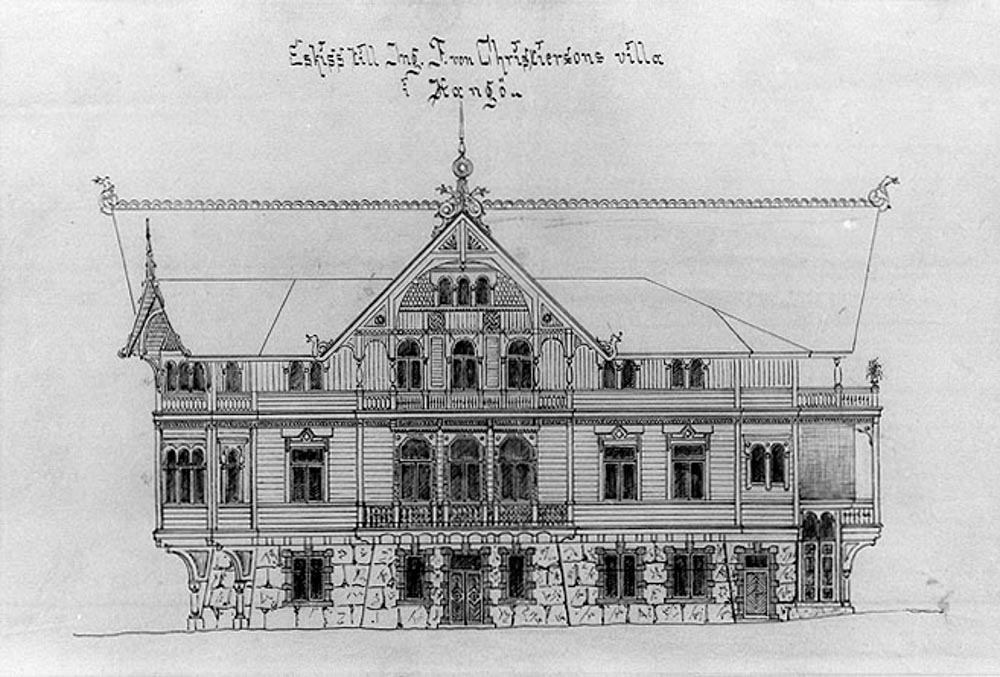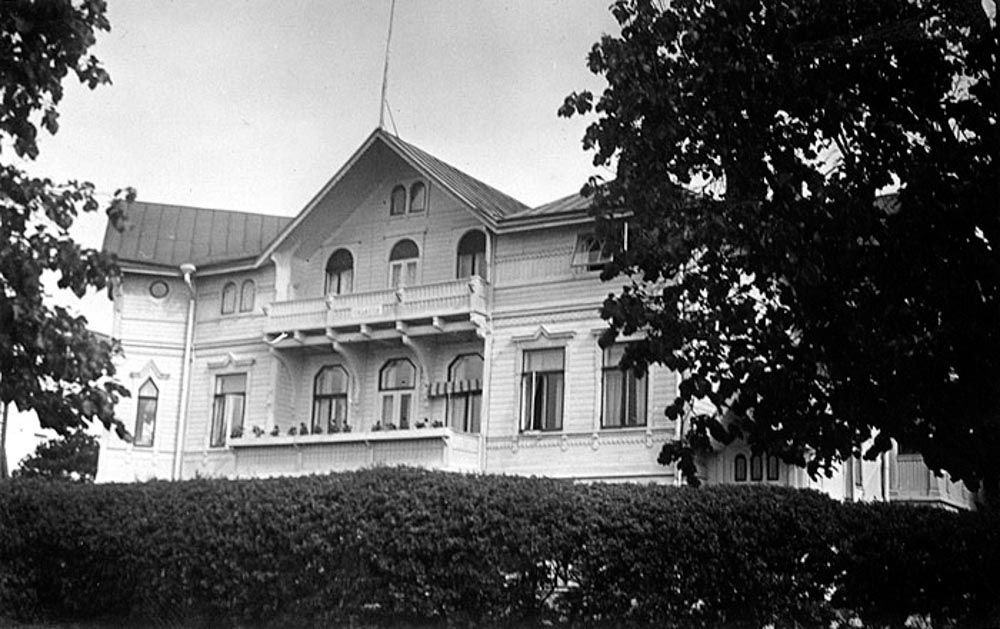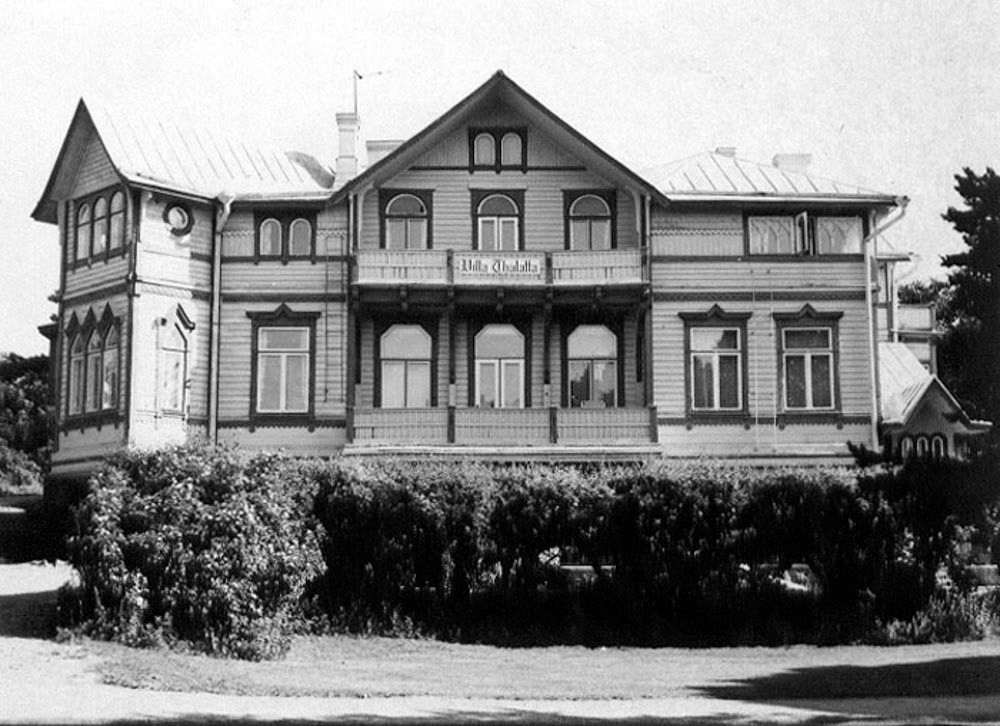
Thalatta! Thalatta! Greek warriors shouted for joy this word for the sea 400 years before the end of time. The poorly run military expedition turned into a relief when they saw the homely shores of the Black Sea. A couple of thousand years later, even in Hanko you can shout for joy Thalatta! Then you will say hello to a wonderful wooden villa on the southern slope of Vartiovuori right by the sea.
Text: Ilkka Rautio
Villa Thalatta was designed by architect Bruno F. Granholm in 1893-94. Granholm is also known as the designer of the glass pavilions of the Helsinki restaurant Kappel. The villa was built by railway engineer Ferdinand von Christierson. Ferdinand studied in Hanover and worked in Germany, Russia and England. When the Hanko-Hyvinkää railway line was completed in 1873, he returned to Finland. He got engaged to his future wife Olga Appelgren in 1875, and in 1882 he started working as a steamship inspector in Hanko. Ferdinand was an active developer of Hanko and he held several positions of trust in the city. He was retired by the inspector in 1921 at the age of over eighty. The road between Thalata and the sea is named after von Christierson.
In terms of style, Thalatta combines the Swiss style, which represents working methods natural to wood, with a decorative nickar style. Both styles were fashionable in the second half of the 19th century. The shingle lining of the villa's facades, on the other hand, draws from the ancient Nordic style.
Thalatta functioned as a villa, but you could rent rooms there at least in the 1910s. The railway engineer von Christierson sold the villa to professor Rolf Lagerborg, known as a philosopher. He was known as a fierce thinker. For example, the play written by Lagerborg in 1902 Öfver bräddarna (over the boards) didn't premiere until 2014, because the play was considered too radical at the time. Rolf Lagerborg's cousin architect Signe Lagerborg-Stenius renewed the facade of Thalata in 1916 and improved the building technology. Signe Lagerborg-Stenius also designed other buildings in Hanko. From his pen are e.g. Ljungbo Lung Sanatorium, which he designed for his cousin, doctor Viva Lagerborg – Rolf Lagerborg's sister. Many celebrities also visited the villa, and it is known that one Mannerheim even spent his summers in the house.
In 1927, 42-year-old Miss Hilja Siviä from Pastell New York arrived in Hanko. He had gone to America in the hope of a better life and now returned to Finland with a suitcase of money. With this money, he bought Villa Thalata and started running the accommodation business. Miss Pastell was known as an eccentric person and she was a familiar sight in Hanko's street scene.
During the Second World War, villa Thalatta served as a hospital and accommodation for officers. Perhaps early in the morning on December 1, 1939, the commander of the naval forces, Jaeger General Väinö Valve, was staring out to sea from the balcony of Thalata when the ships of the Red Army approached Hanko? Fortunately, the Russarö coastal artillery under Valvee's command managed to repulse the attack. In memory of this, the general suite located on the upper floor of Thalata is named after General Valvee.
Villa Thalatta and the adjacent villa Villa Tellina got new owners in 1954 when Matti and Anna-Liisa Haahti started accommodation in Hanko. After them, the fourth generation of Haahtie runs the accommodation business. Christian and Mira Haahti and their son Edwin offer tourists the opportunity to experience the atmosphere of the olden days in wonderful wooden villas by the sea. Maybe from Thalatta's balcony on a summer night you can hear a shout of joy at Thalatta! Thalatta!
Sources:
Lehto, Tiina: Hanko's building culture and cultural landscape. Hanko Museum Publication Series No. 8. Hanko 1989.
Aho, Jouko: Lagerborg, Rolf (1874?1959). National biography online publication. 24/02/2000. Helsinki: Finnish Literature Society.
Photos: Hanko Museum,



